
Create a balance between inventory and availability in your NOOS assortment.
FASHIONBOARD Demand Planning calculates a 52-week sales forecast, which is then translated into procurement suggestions for individual styles and sizes.
The procurement suggestions are based on the chosen procurement strategies, MOQ (Minimum Order Quantity) limits, lead times, and other parameters specific to each supplier.
FASHIONBOARD Demand Planning integrates seamlessly with your existing ERP systems and can be implemented within 1-2 weeks. Look into the future of procurement with reduced inventory and increased availability.
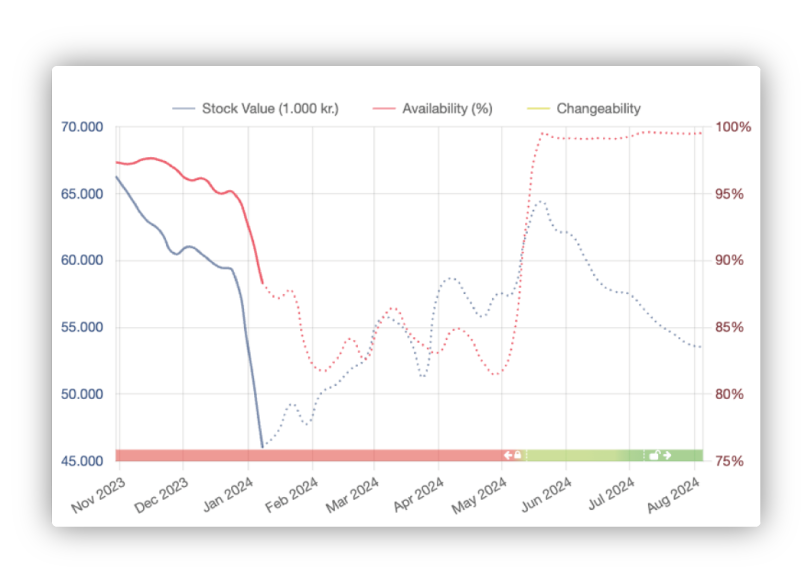

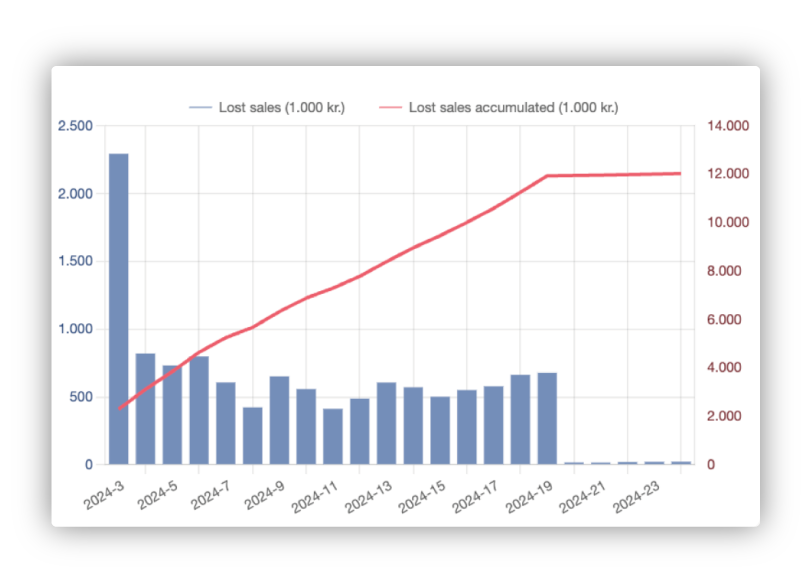
from forecast to purchase
Sales forecasts and procurement suggestions are generated based on historical data and a set of parameters specific to the company.
Sales forecast
- Customers
- Orders
- Reservations
- Stores
- Stock outs
- Outliers
Styles, colors & styles
Styles, colors
& sizes
Purchase suggestions
- Suppliers
- Leadtimes
- MOQ-rules
- Raw material stock
- Disposition-
rules
Enhance the procurement process and make replenishment more transparent.
FASHIONBOARD Demand Planning addresses challenges that are too complex to solve within an ERP system or spreadsheet. With direct access to your ERP system, FASHIONBOARD Demand Planning is continuously updated with data, keeping track of your inflow and enabling faster response times. Monitor the ongoing quality of key metrics related to procurement and replenishment.
Facilitate the optimization of workflow by providing a more secure foundation for procurement and replenishment decisions, particularly for each style with the appropriate size mix.
Monitors key metrics for the next 52 weeks, including week cover, inventory values, weighted availability, out-of-stock percentage, potential lost sales, and unnecessary purchases.
Easy to implement and user-friendly for both experienced planners and new users in the system.
Implement varied procurement strategies for product groups and suppliers.
Opportunity to enhance collaboration with suppliers through data exchange, leading to shorter lead times and improved planning.
Typical outcomes after 3-6 months include a 20-30% reduction in inventory and an increased availability of 10-20%.
FASHIONBOARD is not better that human, but it can help humans become better
We provide buyers with the tools to make informed decisions by creating an overview and utilizing historical data.
When combined with human expertise, this leads to stronger processes and better results.
We provide buyers with the tools to make informed decisions by creating an overview and utilizing historical data. When combined with human expertise, this leads to stronger processes and better results.
Features
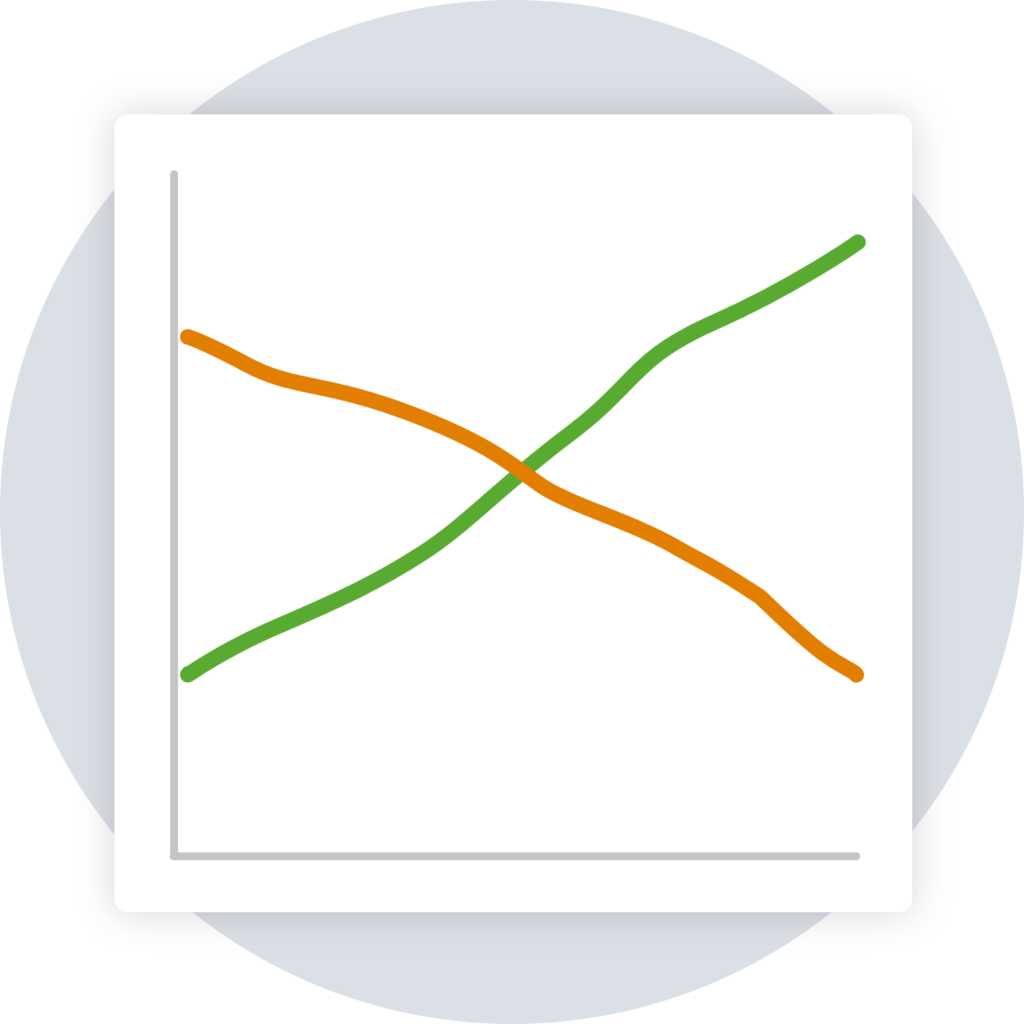
Stock value and availability
Optimize and maintain a continuous balance between inventory value and availability. FASHIONBOARD Demand Planning calculates procurement suggestions down to the individual style, color, and size based on the chosen procurement strategies.

LAST MINUTE CHANGES
FASHIONBOARD Demand Planning identifies potential shortages in already placed purchase orders for each style and suggests last-minute changes for open purchase orders.

A strengthened foundation for forecasting.
FASHIONBOARD Demand Planning continuously optimizes the forecasting model by adjusting season profiles, customer purchasing behavior, and can also predict upcoming trends based on historical data.

FABRICS MANAGEMENT
Enhance the dialogue with the supplier. Monitor the inventory levels of own fabrics across styles with upcoming procurement suggestions and orders. Or keep an eye on the capacity utilization at the supplier’s end.

Maintain overview with dashboards
Robust dashboards that provide a clear overview, tailored for either buyers or management, showcasing key performance indicators (KPIs). Functionality that can alert about critical situations that require attention (early warnings).

Closing periods by the supplier
FASHIONBOARD Demand Planning takes into account supplier closure periods, such as Chinese New Year. Procurement suggestions are placed strategically to ensure timely arrival of goods.

Focus on the important styles
The ABC analysis categorizes the assortment based on turnover and ensures that attention is focused on the most crucial styles. Do we have the right availability for the right products, and what occupies space in the inventory?

Optimize container filing
Optimize container capacity by filling it with the most essential styles. Let FASHIONBOARD Demand Planning suggest which styles to fill the container with based on the forecast for the upcoming weeks.
INNOVATIVE SOFTWARE SOLUTIONS FOR THE FASHION INDUSTRY
FASHIONBOARD is a suite of Danish-developed SaaS solutions that focuses on optimizing the procurement and replenishment processes in the fashion industry. The modules Demand Planning for NOOS assortments, Style Investment for collection sales, and Replenishment for the transfer of goods between stores, lays the foundation for optimized inventories, increased availability, and enhanced sales efficiency.
FASHIONBOARD is a suite of Danish-developed SaaS solutions that focuses on optimizing the procurement and replenishment processes in the fashion industry.
The modules Demand Planning for NOOS assortments, Style Investment for collection sales, and Replenishment for the transfer of goods between stores, lays the foundation for optimized inventories, increased availability, and enhanced sales efficiency.
Reports
FASHIONBOARD Demand Planning includes various reports that make it easy for buyers and management to get an overview of the NOOS assortment. The reports include, among other things, inventory development, potential lost sales, ABC analyses, open purchase orders, size-split errors, and much more – see a few examples below.
Stock development
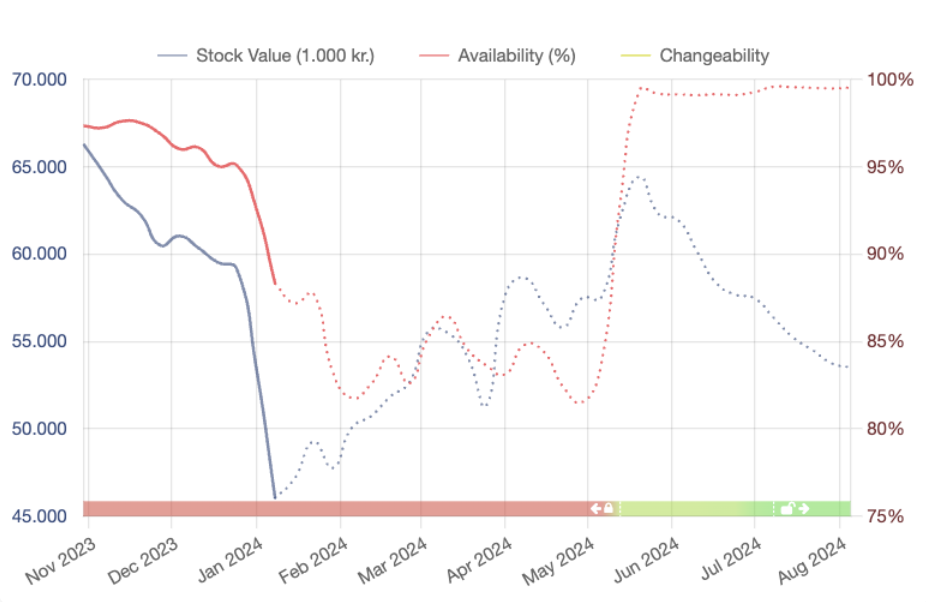
Overview of the inventory’s development up to one year back and going forward. The graph illustrates the balance between inventory value and availability, showcasing your ability to influence the inventory.
Potential lost sales

View a projection of potential lost sales based on the current situation. View the distribution over weeks (blue) and as an accumulated display (red)
ABC analysis
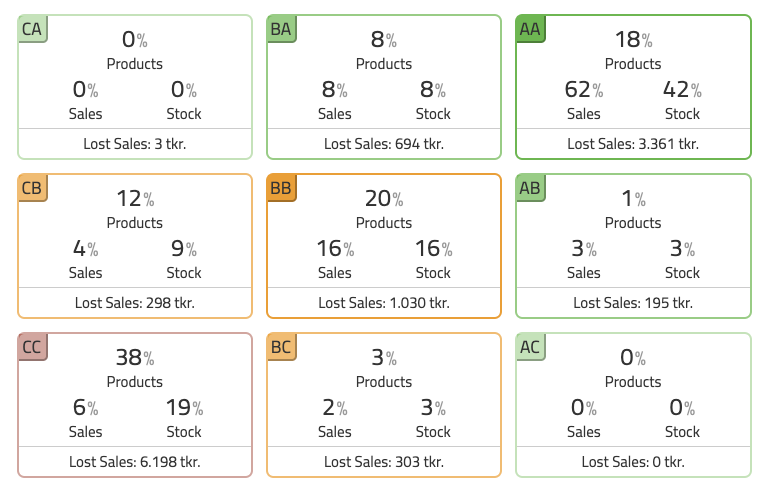
The ABC analysis provides an overview of how the assortment is distributed according to the ABC classification. Discover the proportion of sales and inventory for your AA products versus CC-products.
Other FASHIONBOARD modules

Style investment
FASHIONBOARD Style Investment tracks new collections from start to finish, providing buyers with better conditions for more accurate collection replenishment, with the option to take calculated gambling*. The process ensures that sales and procurement are aligned before the final purchase orders are initiated.
Other FASHIONBOARD modules

Style investment
FASHIONBOARD Style Investment tracks new collections from start to finish, providing buyers with better conditions for more accurate collection replenishment, with the option to take calculated gambling*. The process ensures that sales and procurement are aligned before the final purchase orders are initiated.

Replenishment
FASHIONBOARD Replenishment monitors all merchandise flows, inventories, and sales to predict future sales for each store. The system’s algorithms will calculate proposals for each store at the style and size level, taking into account the established delivery days and chosen inventory strategies.


